
A Fellowship in Peril — The Lord of the Rings: The Two Towers
Andrew Lesnie, ACS and director Peter Jackson take on the second installment of this epic fantasy trilogy.
Unit photography by Pierre Vinet, Ken George and Chris Coad
Additional photo by Andy Reid
The second film in New Line Cinema’s The Lord of the Rings trilogy, The Two Towers, takes the members of the now-sundered Fellowship into darker, more perilous terrain. Against the backdrops of Rohan and Gondor, our heroes must confront the vast armies of Mordor and Isengard as the final war with the evil lord Sauron becomes increasingly inevitable. Hobbits Frodo (Elijah Wood) and Sam (Sean Astin), now accompanied by Gollum (Andy Serkis), continue their arduous journey to Mount Doom, while the other Hobbits, Merry (Dominic Monaghan) and Pippin (Billy Boyd), escape from their Uruk captors and meet the Ents of Fangorn Forest. Meanwhile, Aragorn (Viggo Mortensen), Legolas (Orlando Bloom) and Gimli (John Rhys-Davies) pursue the Hobbit’s captors, and then make a stand against the forces of Saruman (Christopher Lee) at Helm’s Deep.
“For The Two Towers, I decided that the light should be less controlled. I was able to follow the travails of each group and decide what was appropriate for the mood at any particular moment.”

Director of photography Andrew Lesnie, ACS — who won an Academy Award and earned an ASC Award nomination for his work on the trilogy’s first chapter, The Fellowship of the Ring (see AC Dec. ’01), says the visual arc that director Peter Jackson and he conceived for the trilogy entails a slow shift toward grittier, darker and dirtier images. Accordingly, much of the action in each narrative thread of The Two Towers occurs against the backdrop of aggressive and dramatic landscapes. "There’s certainly less of the nicer places, such as The Shire, Lothlórien or Rivendell, in The Two Towers," Lesnie confirms.
Lesnie describes the visual scheme of The Two Towers as "hardened reality." He explains, "For The Fellowship of the Ring, I was very conscious of modeling with light, applying a black-and-white philosophy in using the tonal scale to create separation, rather than [doing so] through color. For The Two Towers, I decided that the light should be less controlled. I was able to follow the travails of each group and decide what was appropriate for the mood at any particular moment. Middle-Earth is descending into a very dark time, and the characters are battling to find light at the end of the tunnel, so the film needed to be more realistic and aggressive than The Fellowship of the Ring. The overall feel is less magical, and the story has become fractured and splintered."
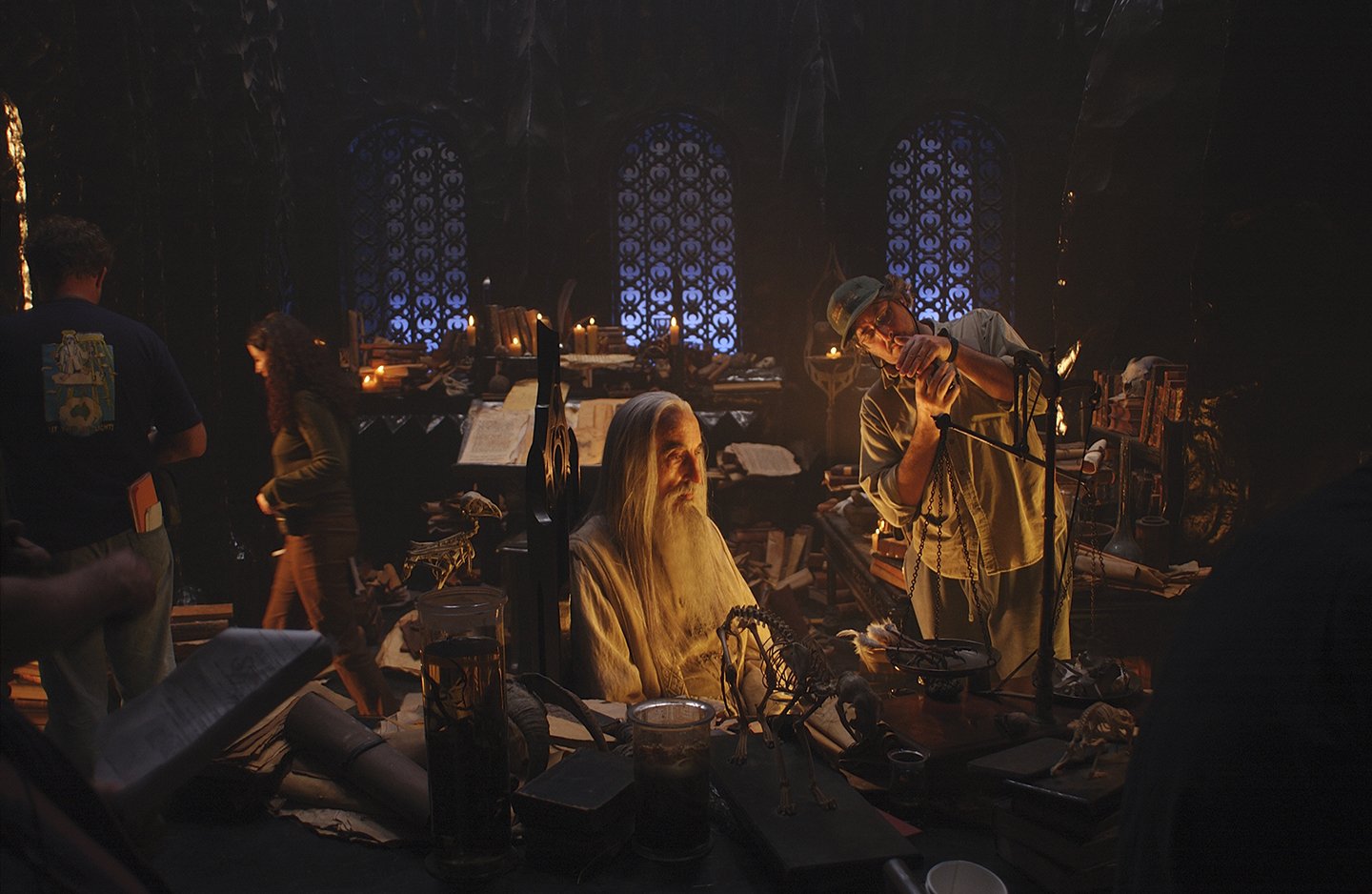
The disintegration of the Fellowship necessitates a complex narrative structure, and it also provides the filmmakers with the opportunity to explore the themes of destiny and mortality. The story of Frodo, Sam and Gollum is as much a journey into the darker side of Frodo’s soul, as he struggles against the Ring’s evil power, as it is a journey across the shadowy lands of Middle-Earth. Lesnie cites a key scene from The Fellowship of the Ring — a conversation between Frodo and Gandalf in the Mines of Moria – as a cornerstone that provides subtext for Frodo’s continuing journey. "I feel that the scene in which they talk about Gollum sets up the themes for the storyline that involves Frodo, Sam and Gollum in The Two Towers," says the cinematographer. "Frodo comes to realize that Gollum represents what he may become. That scene is also a comment on the nature of compassion, and this is related to Frodo’s struggle against the power of the Ring. The theme is that everyone is essentially good, but there are dark forces in life that affect us. It’s how you deal with those forces that is the measure of your character. This kind of thing isn’t necessarily easy to translate into a visual concept, but while Peter and I were blocking scenes and working out the coverage, these thoughts were in the back of my mind."
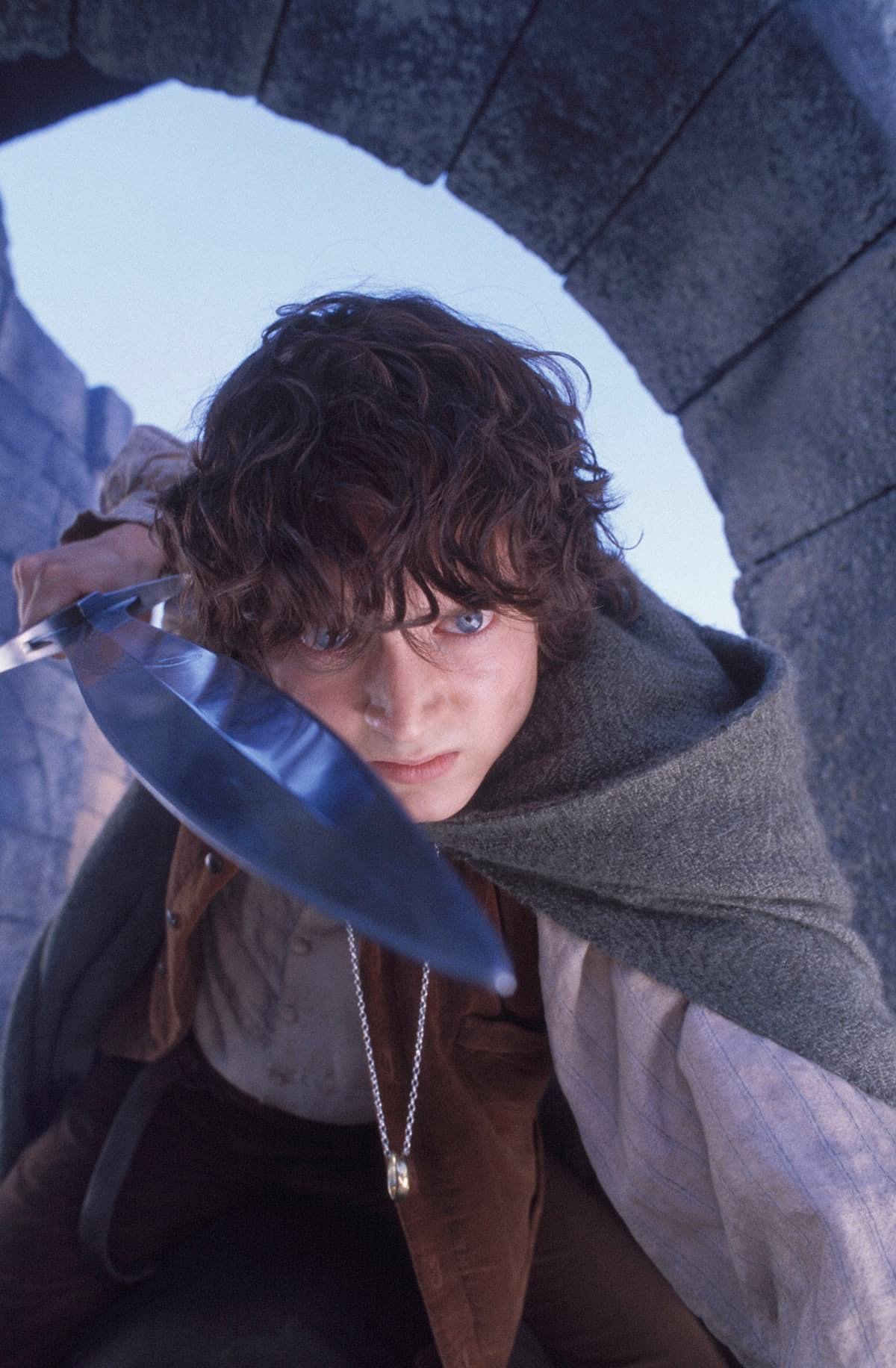
Themes and storylines introduced in The Fellowship of the Ring are expanded in The Two Towers through a variety of means. "Peter knows that in dealing with a trilogy of this complexity, one has to be able to interweave themes and issues throughout all three films," Lesnie points out. "This is something that is so evident in J.R.R. Tolkien’s books. The story of the ill-fated Boromir [Sean Bean] from The Fellowship of the Ring is continued when Frodo and his companions encounter Boromir’s brother, Faramir [David Wenham], in The Two Towers, and that story will continue further in the third film. In the case of Aragorn, he is not only on a journey to confront his own destiny, but he is also in love with Elrond’s daughter, Arwen [Liv Tyler], who will outlive him. This is an issue that periodically comes to the fore in The Two Towers, when Aragorn is close to death; we explore it through what can be described as dream sequences. To express such themes visually, I approached many of these sequences on an abstract level, seeking to create scenarios that show the character’s perception of mortality."

Another departure from the style of The Fellowship of the Ring was the reduction in the number of eyelights used on actors. "Peter was very specific about the use of eyelights for the first film," Lesnie recalls. "For the second film, however, we used them less frequently because we wanted to impart the feeling of less-controlled light. This, in combination with other elements, signals that the characters must think seriously about their abilities to affect the outcomes of situations in which they find themselves."
During postproduction on the film at The PostHouse AG, Lesnie and supervising digital colorist Peter Doyle also enhanced the sense of creeping menace through "the subliminal idea that the more anger or fear one feels, the sharper things appear to be." Doyle explains, "We built a new set of sharpening kernels for The Two Towers. They pick up where the lens drops off, and the frequency is just a little bit higher than the film grain, so [they really provide] a nice zing without making the grain scream – thereby avoiding the ‘video look’ that some digital intermediates have when they get too sharp."
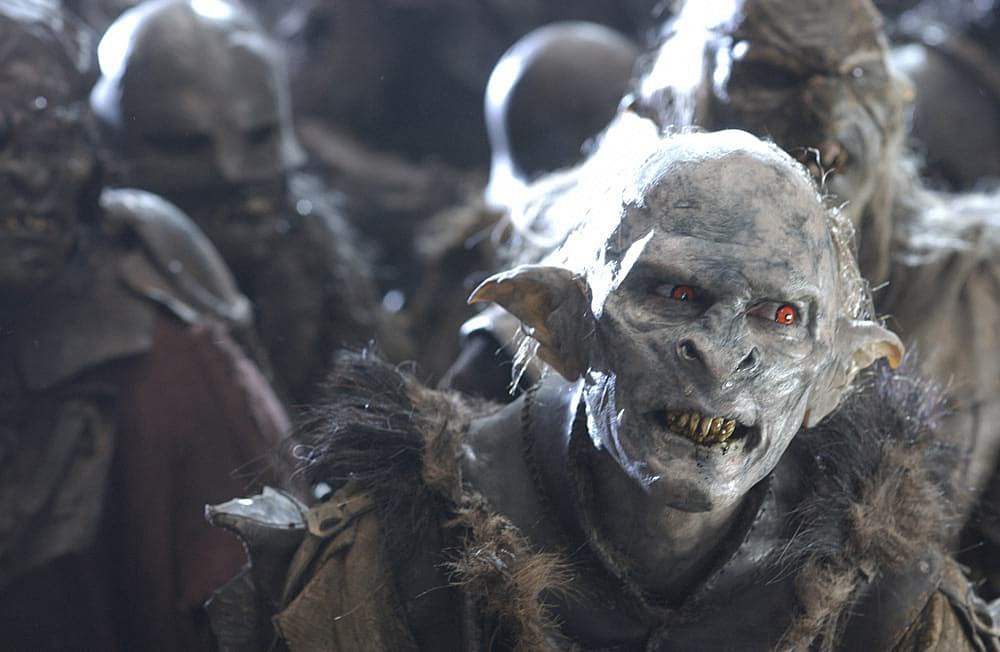
For the digital grading, Weta Digital scanned the negative at 2K full aperture on two Imagica X-3000 scanners using proprietary look-up tables built by PostHouse and Weta. The scans were then fed onto a central server with around 4.5 terabytes of RAID disk that in itself is capable of delivering 1K at real time or 2K at six frames per second. "These unibyte disks were built for us in Germany, and I like them because they come with lots of little blue, flashing lights," Doyle says with a laugh. "That server hangs off an Origin 2000 server, from which we feed three Octane V2s using V8 Graphics. Each workstation has 2.7 terabytes of RAID disk configured to deliver 1K real-time to each operator. The film was shot in Super 35, and when we recorded back out to film we used a proprietary digital squeeze onto EK 5242. We then duped onto Eastman stocks and made release prints on Fuji 3513D."
Shooting on Kodak emulsions and printing on Fuji print stock was a strategy Lesnie had also applied on The Fellowship of the Ring. The cinematographer notes that he and Jackson were after a softer contrast than the Kodak print stocks allow, explaining, "We felt that the Fuji print stock was more forgiving in the lower gray tones." Adds Doyle, "Technically, it isn’t softer – it has a more extended MTF [Modulation Transfer Function] response in the blue layer than Kodak. The grain, however, has a different look than Kodak stock, and I think the Fuji blends the colors a bit more. With digital grading, you’re interested in the density or the dynamic range, grain and sharpness. The more linear the stock’s curve, the better."
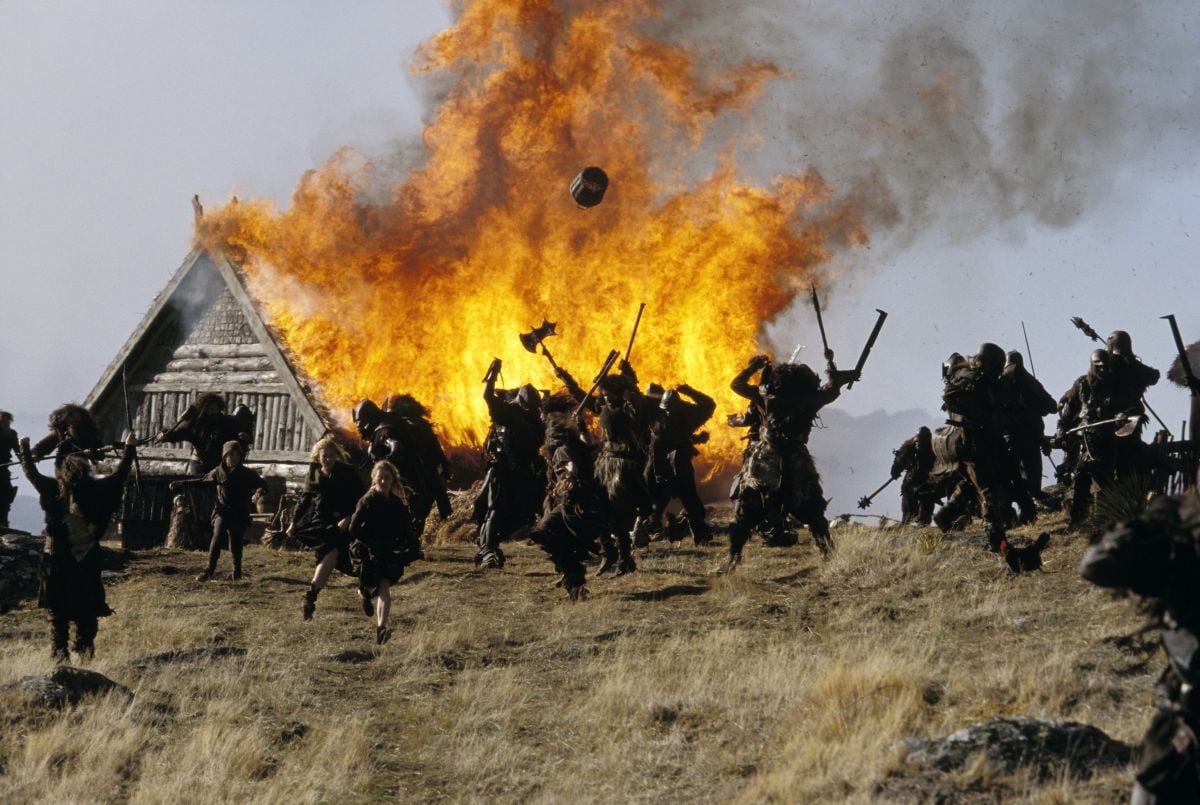
One of the most striking sets in The Two Towers is the Rohan city of Edoras, home of King Théoden’s Golden Hall. The life-size set was built on a solitary hill in an otherwise flat valley on New Zealand’s rugged South Island, with the Southern Alps forming a natural, dramatic backdrop. "The only downside was that sometimes incredibly strong winds would come rocketing through the valley at hundreds of kilometers an hour," Lesnie recalls. "We therefore worked without putting up big diffusion materials." For wide shots involving hundreds of extras, Lesnie used two 50K SoftSuns for fill, describing them as "great lamps for generating a broad hit over an area. If we were in a situation where the sun was backlighting a group of people in a field, I was able to put up two track booms [Condors mounted on caterpillar tracks] with a SoftSun in each, and they’d throw enough to just lift the shadow area. When we moved into two-shots and singles, we brought the SoftSuns in closer and used diffusion frames."
"Edoras was interesting on a technical level, because the mountain range just happened to be around 18-percent-gray exposure," Doyle notes. "It therefore acted as a wonderful grain test for the entire background and the actors in the foreground, who were lit by the hard New Zealand light. Andrew and I also built a filter that acts like a lens with all of its color coating ripped off. It doesn’t look old and sepia, but there’s a touch of blooming in the highlights, like a silver-metal photographic print from the 1890s. Andrew and I also softened the blacks to see into them a little more."

The race of Men is presented as somewhat pagan and feudal, a characteristic that influenced Lesnie’s approach to the Edoras scenes. "When we were filming the Rohan scenes, I kept telling myself that it felt medieval, so the makeup and colors tended to be earthy greens and browns." The key dramatic determinant in Lesnie’s method was the change that comes over King Théoden (Bernard Hill) after Gandalf lifts Saruman’s spell. When the group first arrives at Edoras, Théoden is being advised by Saruman’s minion, Wormtongue (Brad Dourif), who has ingratiated himself into the court. A resultant rot is setting into Rohan society, starting at the very top. "Saruman and Wormtongue are literally breaking down the health of the king," Lesnie explains. To express this, Lesnie, the art department and Doyle combined their efforts to create a distinctive, desaturated look, "as if the life is literally being sapped or bleached out of Edoras," Lesnie says.
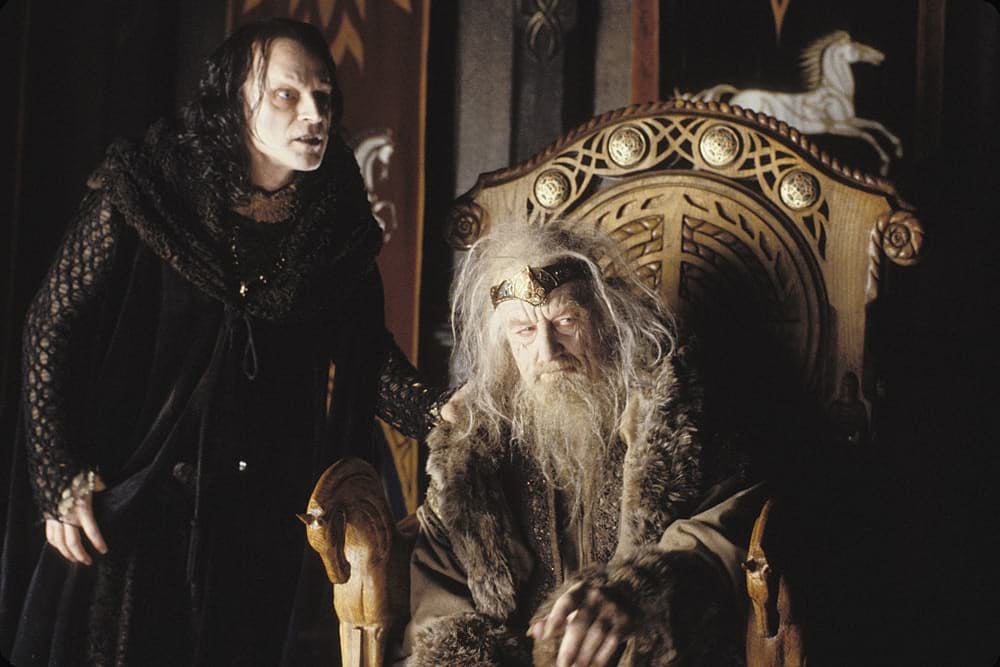
Doyle outlines the technical considerations of the grade: "We convert from RGB into a different colorspace, so rather than work in CYM [Cyan, Yellow and Magenta], we convert it into HLS [Hue, Luminance and Saturation]. This means we can reduce the saturation based on color only. For example, we can keep the skin tones while dropping everything else down in saturation and changing the colors slightly. For the blacks, we took out the red wash that Kodak stocks traditionally have, making them pure black, which is very rarely seen on a film print. We also selected key components of the production design, such as the yellow and burgundy Edoras flag, and let those colors kick back in. Initially, it’s quite an elaborate setup, but the result works very well — it looks like the color-dye prints of photos from the 1950s. All of the colors are just slightly twisted and have an entrancing look."
After Gandalf expels Wormtongue and lifts the spell from Théoden, color and life return to the Golden Hall. For the night interiors, Lesnie used warm light created by torches and candles. He was careful to avoid strong color in the lighting, choosing instead to have the increased saturation provided by the art direction and digital grading. "The art department put in banners that were quite rich in color, and those types of earth tones tend to respond pretty quickly to colored light, so I didn’t try to do anything too explicit with the color of the light itself," he explains.
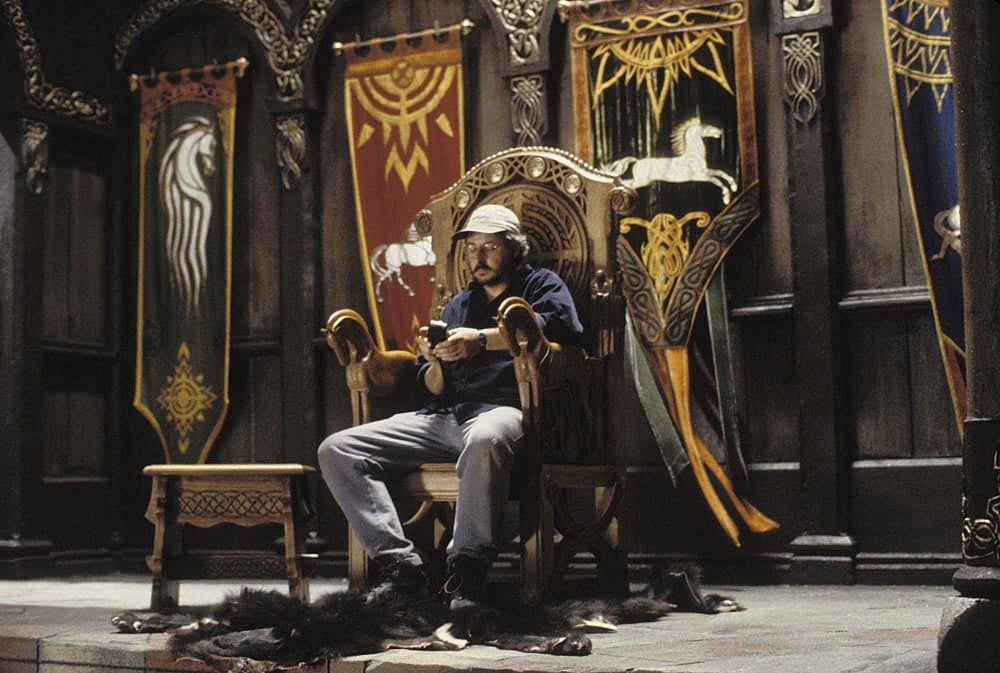
A poignant scene that takes place after the funeral of Théoden’s son, Théodred, was scheduled to be shot over two days late in the afternoon. "The two scenes are set in the barrows, which are down on the lower slopes of Edoras," Lesnie explains. "I used an 85B filter to warm up the first scene. For the following scene, in which Théoden and Gandalf are left alone to reflect on the nature of mortality and the sadness that war brings, we scheduled the shoot for when the shadow of the mountain would completely cover the area. The mountain range in the distance was getting the very rich, late-afternoon light, while the characters in the foreground were in what I felt was appropriately subdued soft light, which I cooled down with an 81EF. The scene deals with very fragile emotions, so it’s fitting to set it at a fragile time of day." Lesnie singles out first assistant director Caro Cunningham as being "absolutely terrific" in helping him achieve the appropriate look for these scenes.
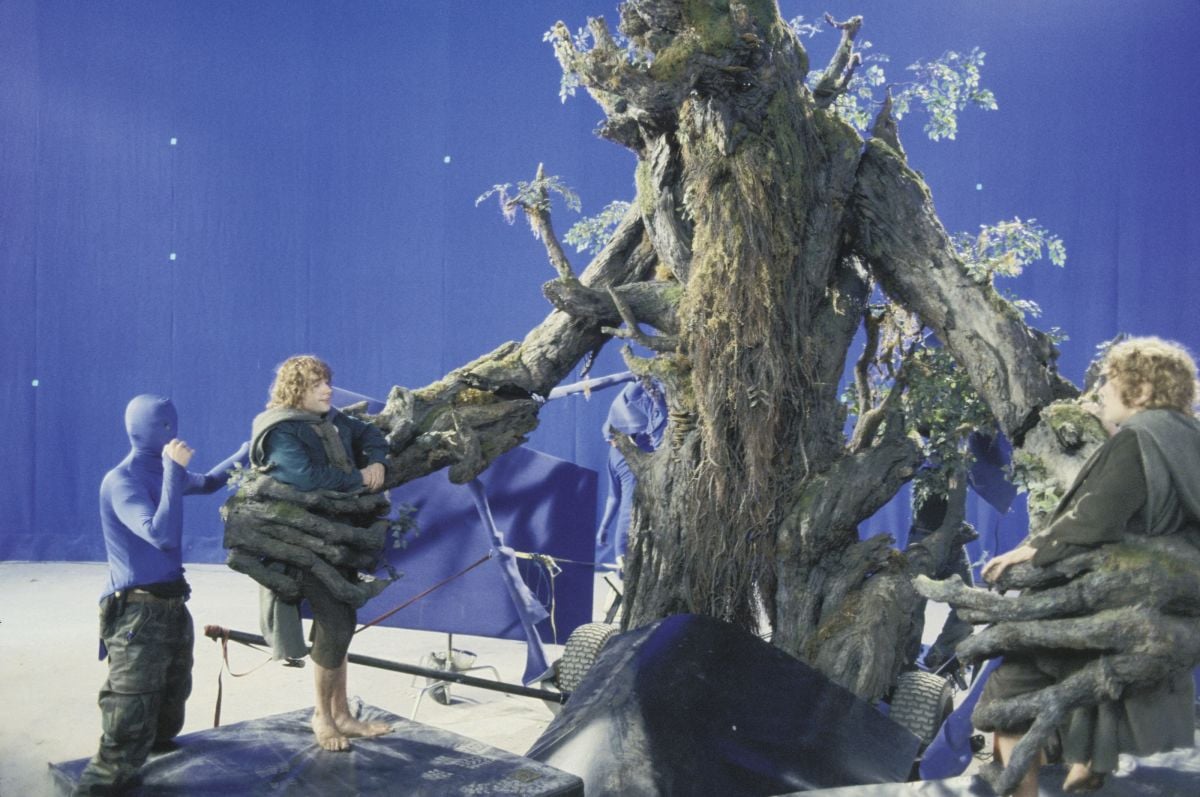
Meanwhile, Merry and Pippin, after escaping the clutches of the ill-fated Uruk column, find themselves in the mysterious Fangorn Forest, which Lesnie describes as one of the most fantastical elements in The Two Towers. Fangorn is inhabited by creatures known as Ents, who are basically living trees, as well as their more aggressive relations, Hurons. It is the Ents and Hurons who turn the tide at the battle of Helm’s Deep and lay Isengard to waste. The forest was the first major studio element in The Two Towers and was achieved through a combination of full-scale live-action and miniature sets. The character Treebeard was accomplished through a combination of large-scale animatronics and digital facial animation. Lesnie shot these miniatures with Richard Bluck, but he credits cinematographer Alex Funke with shooting an overwhelming number of miniatures for all three films. "They passed day 600 a couple of months ago," Lesnie declares. "In itself, [the miniatures are] an epic work-in-progress.


"My gaffer, Brian Bansgrove, and I came up with this great plan to put the lighting for the forest in ahead of the set build," he continues. "We installed space lights in the ceiling of the studio and placed huge silks underneath, creating a large, soft toplight. Underneath that, we ran a fine grid of wire from which we hung camouflage nets, and when the art department built the set, they hung their foliage from that wire. The soft light was considerably reduced in exposure, resulting in a dark, ambient light, which I enhanced by running a slight atmosphere throughout the set." Lesnie completed the look for Fangorn by introducing overexposed slivers of sunlight created by Xenons. "The contrast ratio in a real forest often defies the film stock’s ability to capture it, so I wanted to create a contrast on the set that was too much for the stock."
The cinematographer says he envisioned Fangorn as "spooky but not scary." He adds, "You have to intellectualize these things to a certain extent. For me, Fangorn is one of the oldest places on Middle-Earth, and it has a mystique. Just the mention of the name strikes fear into the hearts of the people of Middle-Earth, but no one knows why. We were therefore trying to create an eerie atmosphere where you want people to step into the unknown, but you don’t necessarily want them to immediately become scared, because that’s simplifying the character of the Ents too much."

Frodo and Sam’s journey to Mordor is interrupted when Rangers from Gondor capture them. The Rangers take the Hobbits to a honeycombed network of caves hidden by a roaring waterfall. The set, which consisted of caves elevated some 30' from the ground, incorporated a live waterfall cascading past a large opening in the cliff. "You couldn’t hear yourself think!" Lesnie recalls. "For the shot in which the Rangers first bring Frodo and Sam into the cave, we fired 20Ks through the waterfall, creating a high-speed, shimmering effect," Lesnie says. "To ensure that the effect would carry to the interior of the caves, I provided an ambient soft, cool light. When we did pickups for that sequence, more than a year later, we recreated the shimmering pattern without water, using spinning mirrors through diffusion material instead."
The leader of the Rangers is Faramir, whose unit is assigned to protect the borders of Gondor; he is also seeking answers to the death of his ill-fated brother, Boromir. Given that the ensuing scenes between Faramir and Frodo are a very intense part of the story, Lesnie kept the shadow areas in the cave quite dense. "Faramir realizes that the answer to his brother’s death is sitting in front of him," he says. "At the same time, Frodo has reached a critical period in his relationship with the Ring."
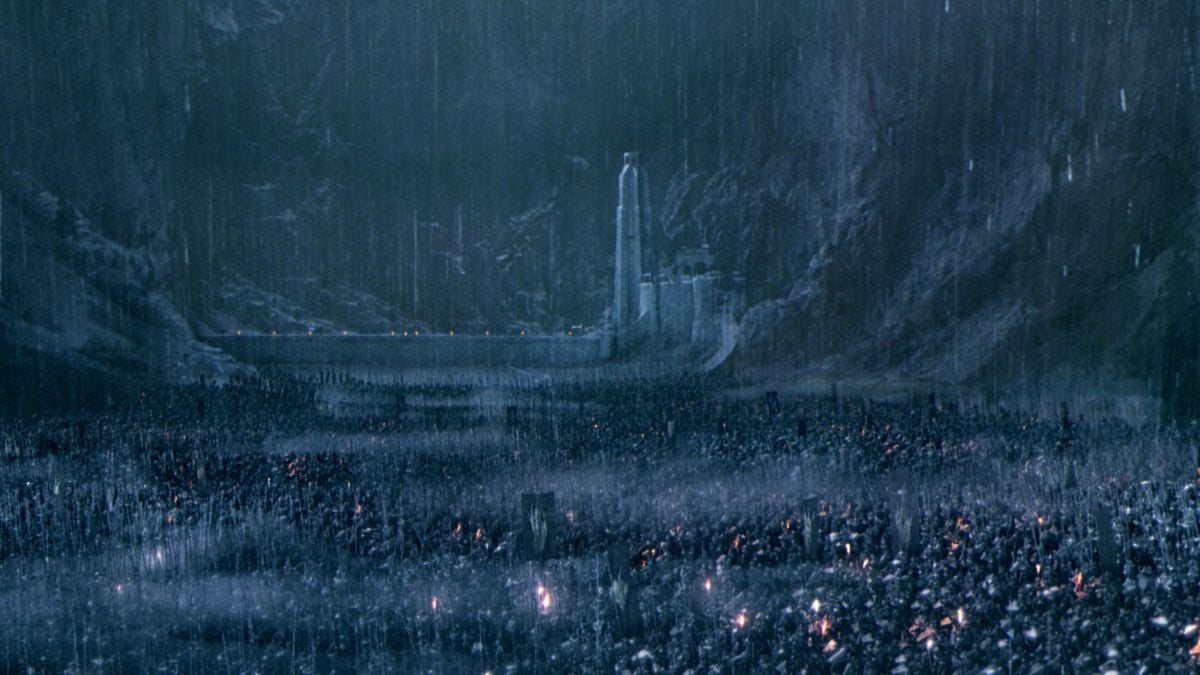
Helm’s Deep is a fortress constructed at the end of a deep ravine. Across the ravine runs the 24'-high Deeping Wall, the Deep’s main defense against attack. The nighttime battle between 10,000 Uruk-hai and the 500 defenders, which is the centerpiece of The Two Towers, took four months of night shoots to accomplish, and there were also day scenes depicting the arrival of refugees from attacks by Saruman’s forces. For the filmmakers, two critical issues were the sheer scale of the sequences and the fact that the battle takes place at night. "Our research showed that very few big film battles have been staged at night," Lesnie recalls with a laugh. "The biggest slab of the night shoots were done by the second unit, directed by John Mahaffie and photographed by John Cavill."
Full-scale exterior sets, including the Deeping Wall, a façade of the Hornburg Castle and the front courtyards, were built in a quarry north of Wellington. Parts of the wall and the castle were also constructed as a forced-perspective set, with the full-size wall curving away to a 1/4-size scale model of the castle, which Lesnie says "was still quite huge. Production designer Grant Major incorporated many of the quarry’s natural rock formations in the placement of his sets. Brian Bansgrove, second-unit gaffer Stewart Sorby and I worked out the logistics of the lighting and power placement, and we also had safety lighting in place."
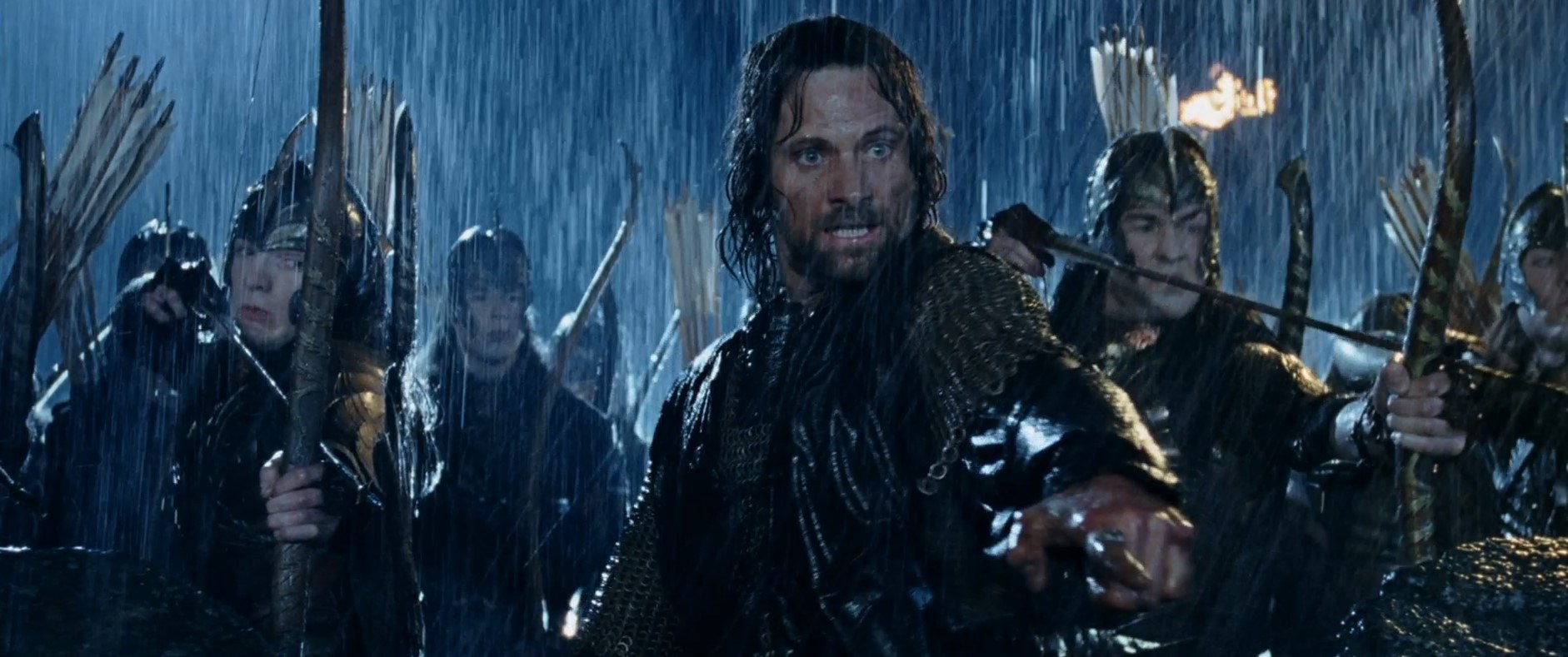
Given the complexity of the set construction and the logistics of staging a night battle involving hundreds of dark-clad extras, some previsualization was required.
The entire sequence was very carefully storyboarded because we knew that we were going to have to break it down," Lesnie says. Weta Workshop built a fully rendered, 100-square-foot model of Helm’s Deep that was utilized by Lesnie and Cavill to establish an overall look to the sequences through extensive lighting tests. It was important to Lesnie that the battle be depicted with strong definition. "I didn’t want to lose the detail of the battle. I wanted to keep the darkness for the mood, but the audience needs to see the battle’s brutality. Helm’s Deep was an opportunity to make a point about the barbarity of the Uruks, who are intent on complete genocide."
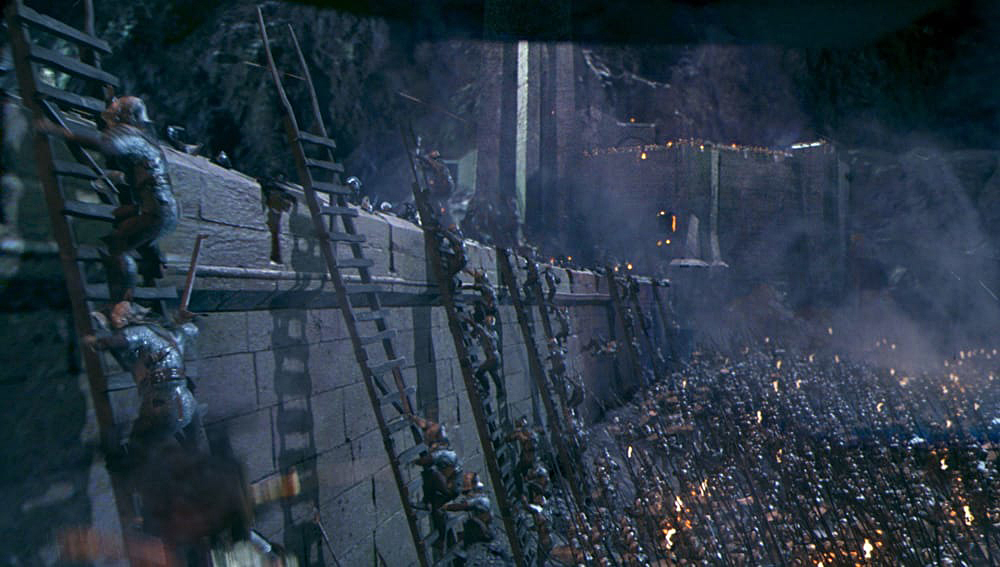
With strong moonlight as the motivation, Lesnie used an overexposed backlight to render the ferocity of the battle in striking detail. He used large sources that could also be moved quickly: a Musco light, three 50-ton cranes supporting 18Ks, and track booms mounted with Dinos gelled with 1/2 CTB. In addition, there were practical fires, flaming torches and braziers. The battle scenes were shot uncorrected, providing Lesnie with the stops he needed, typically T2.8 1/2 to T4.5. During digital grading, he pulled back the blue while retaining a cool look.
The sets weren’t the only large items in use at Helm’s Deep, however. "We had an 80-foot crane that was built in New Zealand," Lesnie recalls. "Because the sets were so big, we built the rails for the crane on top of 20 containers stacked two high. This meant we were able to start a shot in front of the main wall and, while major fighting was going on, crane over the top of those guys and push on another 30 or 40 feet right up to where Théoden was directing the battle." Achieving the shot practically, rather than creating it as a digital move, was important to Lesnie. "It’s not so clear-cut what are effect shots and what are real," he states.
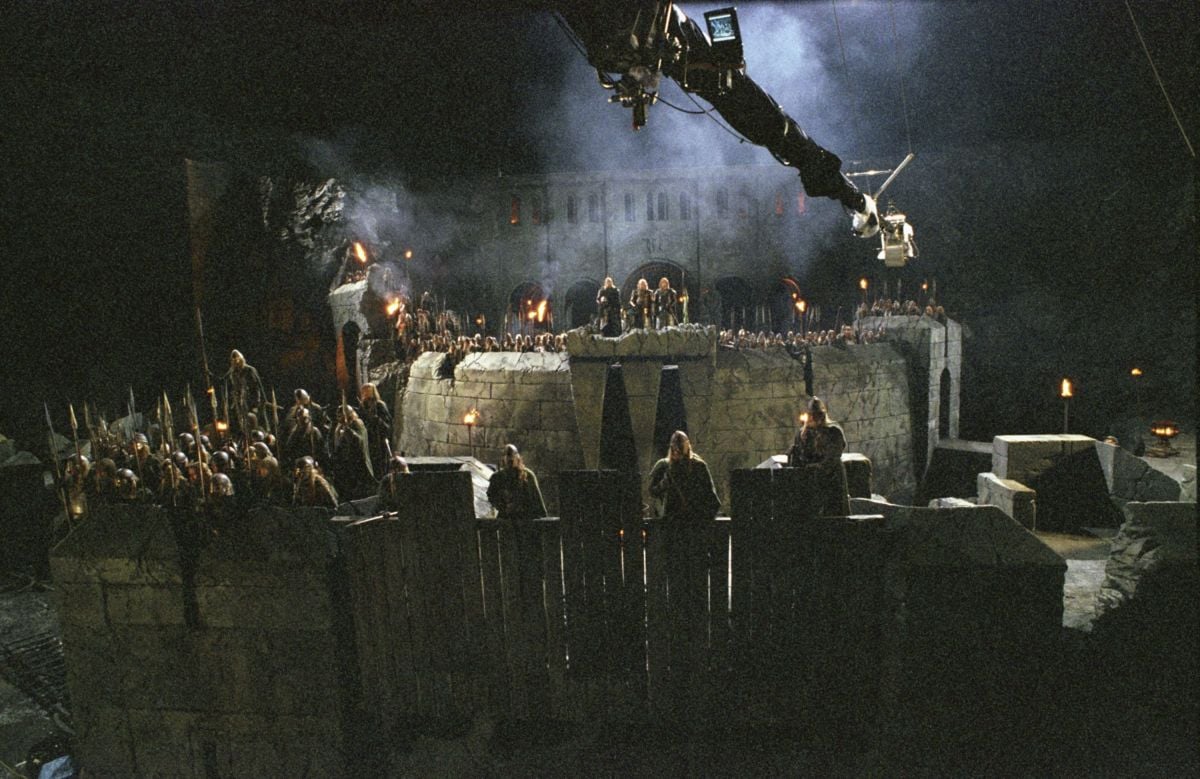
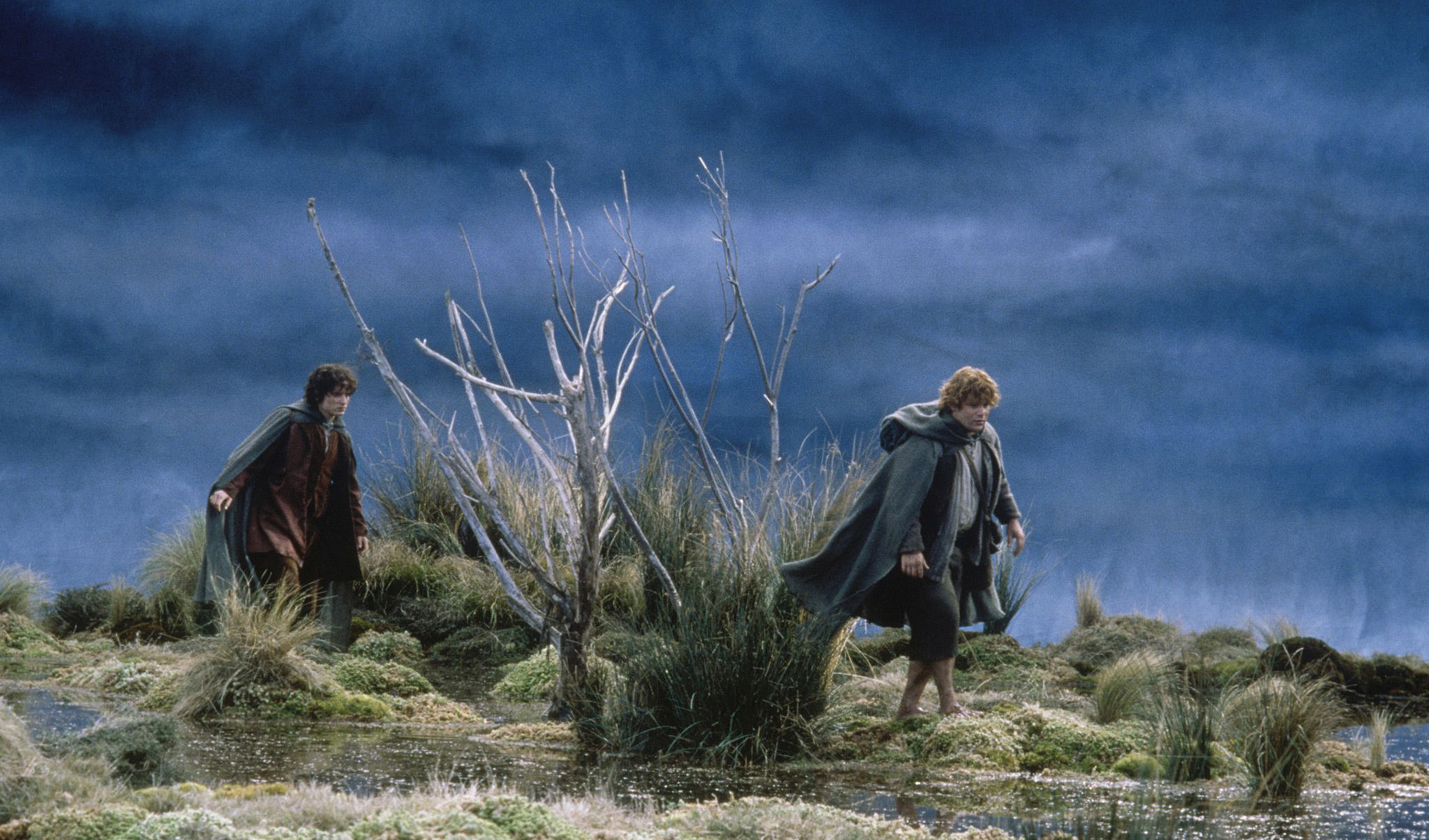
The Dead Marshes are an extensive, exposed plain that Frodo, Sam and Gollum must cross on their journey to Mordor. The Marshes are doubly treacherous – if an unsuspecting traveler takes one wrong step, he sinks like a stone, and the area is also haunted by the souls of dead Orcs, Men and Elves who fought a battle there long ago. Small wonder, then, that Lesnie sought to imbue the Marshes with a mystical feel. "While the Dead Marshes are an eerie environment, I didn’t want those sequences to be insipid or clichéd, but rather uncomfortable and ominous," he explains. "Anyone who walks through the Dead Marshes is prone to fall under the influence of the trapped souls, which Frodo does briefly. We therefore depicted the Marshes as a misty, unnatural environment, with sunlight weakened by the atmosphere. In the grading, Peter and I ran a slight amount of magenta through those scenes as well."
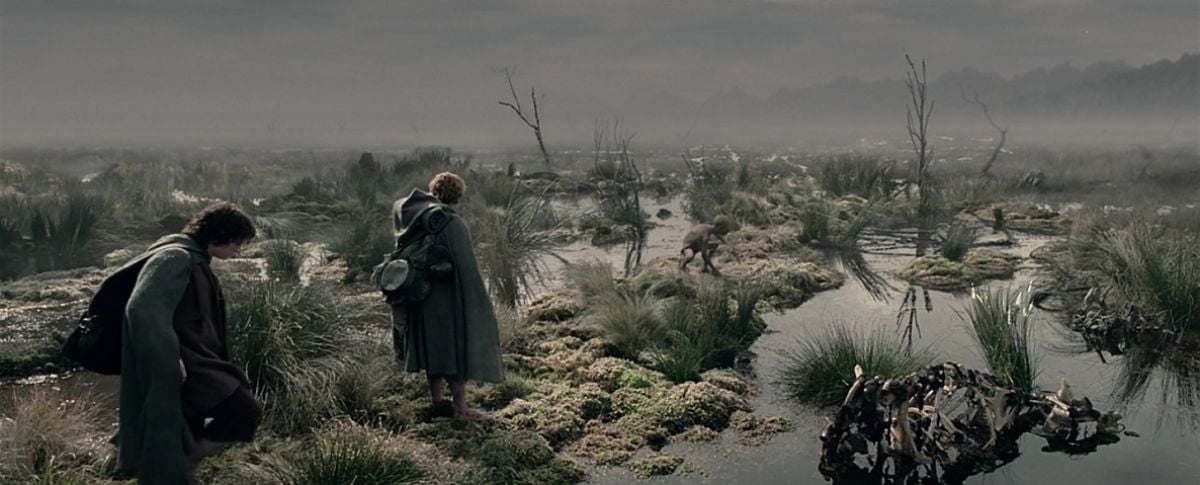
Lesnie emphasizes that unit cinematographers Cavill, Richard Bluck, Allen Guilford, Alun Bollinger, Simon Raby and Nigel Bluck were invaluable collaborators on The Two Towers, just as they had been on The Fellowship of the Ring. "When you have a good group atmosphere, you start to come up with a lot more exciting ideas," he says.
"There aren’t many projects that give you the opportunity to examine your craft with this type of storytelling," Lesnie concludes. "Peter Jackson has a very clear idea of where he wants to go with the trilogy, and he provides his key people with the opportunity to contribute to that direction. When you have a hand in the storytelling, it encourages you to rise to the occasion."
You'll find our coverage on Fellowship of the Rings here and Return of the King here.
Lesnie died at the age of 59 on April 27, 2015, after a brief illness. You'll find our complete In Memoriam remembrance here.
If you enjoy archival and retrospective articles on classic and influential films, you'll find more AC historical coverage here.
Access the every issue of AC and every story from more than the last 100 years with our Digital Edition + Archive subscription.
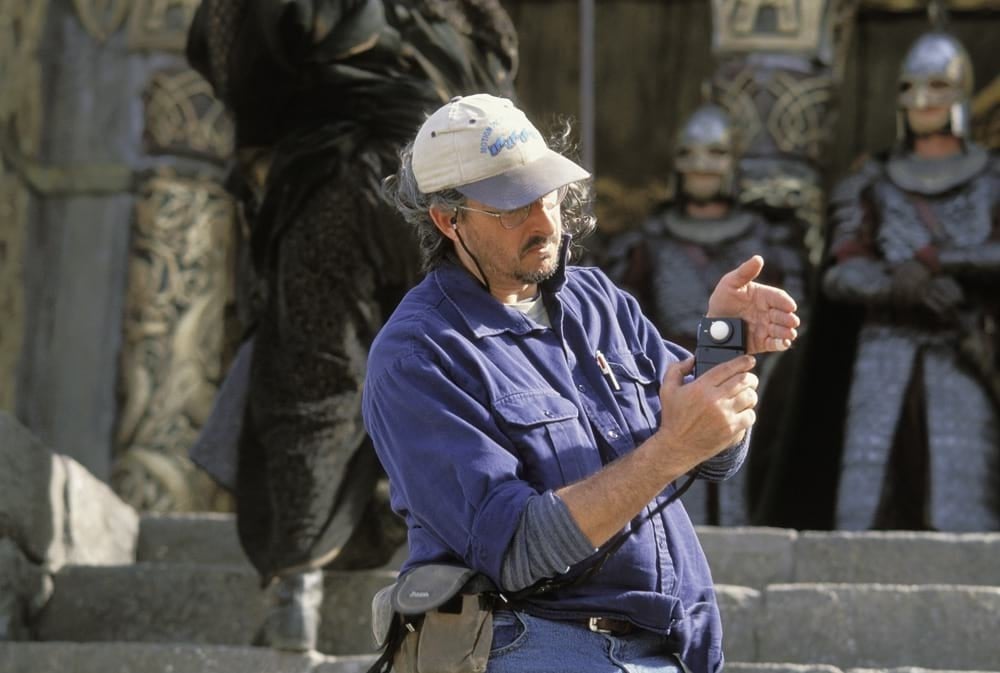
Super 35 2.35:1
Arriflex, Moviecam and Mitchell cameras
Zeiss and Angenieux lenses
Kodak EXR 50D 5245, Vision 200T 5293, Vision 500T 5279, SO 214
Digital Intermediate Scanning/Recording by Weta Digital
Digital Film Grading by The PostHouse AG
Printed on Fuji 3513D






